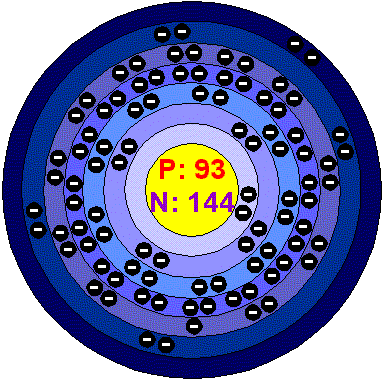|
 |
Chemical properties of Neptunium - Healt effects of Neptunium - Environmental effects of Neptunium
|
 |
NeptuniumNeptunium is a ductile, silvery, radioactive metal. Neptunium forms numerous chemical compounds. Chemically it is extremely reactive and is attacked by Oxygen, steam and acids, but not by alkalis. It can exist in many oxidation states, from Neptunium (II) to Neptunium (VII). Applications Neptunium has been used in neutron detectors. It does not have any commercial application. Neptunium in the environment Neptunium occurs naturally in Earth, being present in minute quantities in Uranium ores. Today Neptunium-237 is extracted in kg quantities from the spent Uranium fuel rods of nuclear reactors. Health effects of NeptuniumNeptunium plays no rule in living things an is never encountered outside nuclear facilities or research laboratories.
Possible Health effects:
Bone cancer
Organ receiving main dose:
Gastrointestinal tract
Summary of health studies:
Most
of the Neptunium that is retained in the body deposits in the bones.
Some is also retained in the liver. Several studies report
"relatively high concentrations" of Neptunium in adrenal
glands of laboratory animals. Environmental effects of NeptuniumNo negative Environmental effects have been reported. |